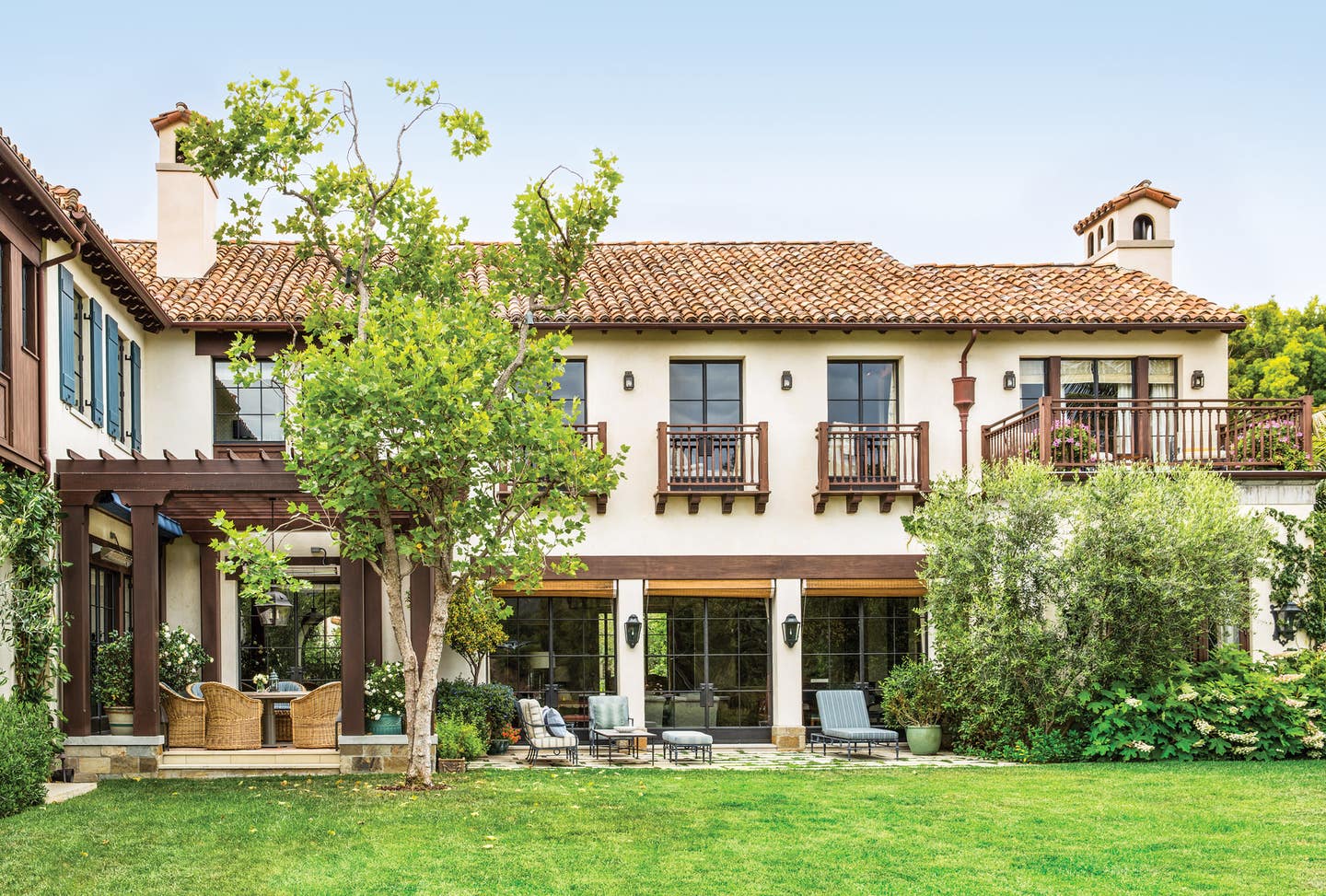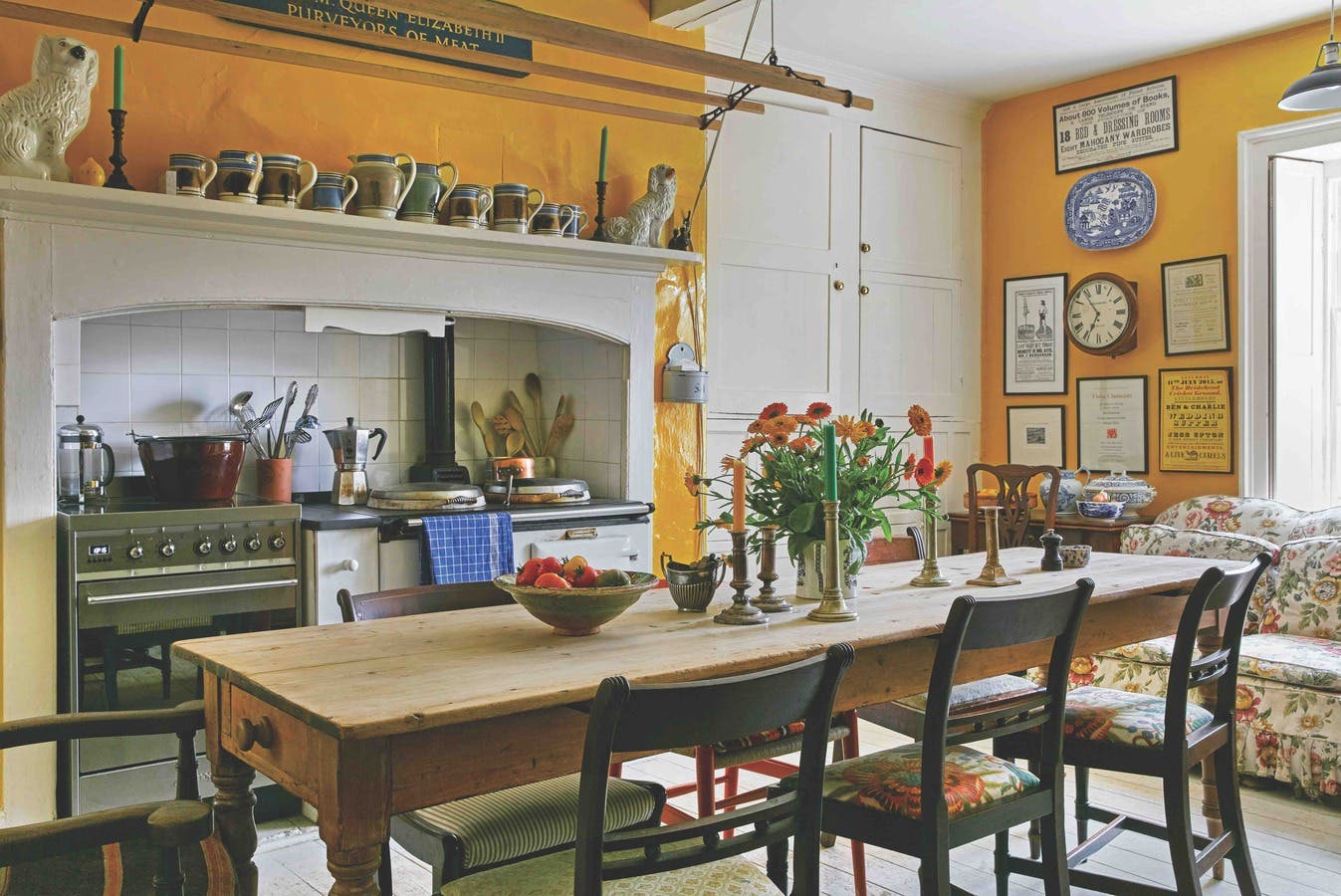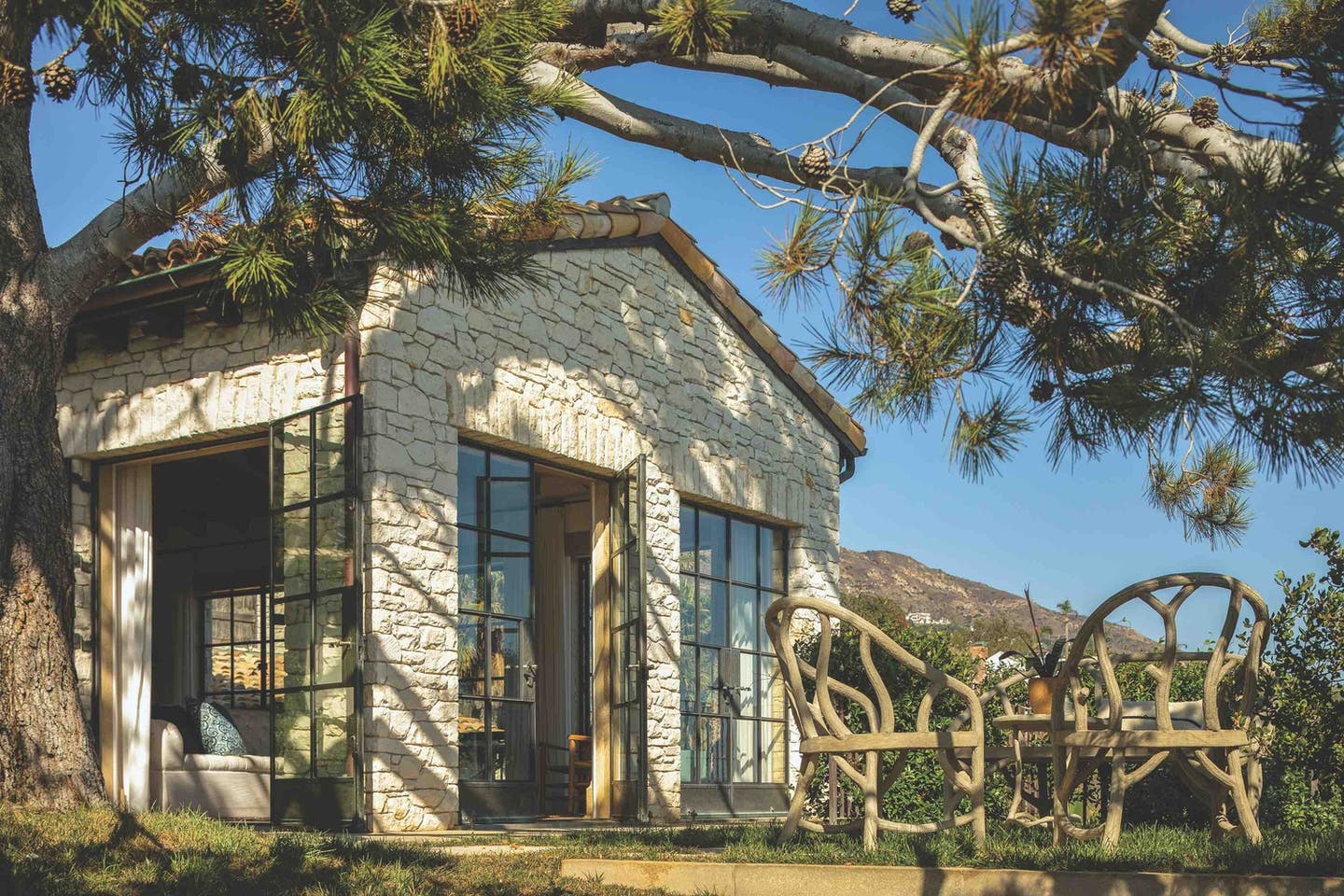
Projects
Ferguson & Shamamian’s Spanish Colonial House
Project: Spanish Colonial
Architect: Ferguson & Shamamian
It started out merely as a renovation project. The owners of the Spanish-style Roaring Twenties home in Santa Monica, California, had raised their children in the house, and it had such sentimental value that they had no desire for drastic construction.
But with the kids grown up, the couple decided to make some cosmetic changes that included reinventing the master suite and changing the configuration of some of the main rooms to make them more in sync with their empty-nest lifestyle.
They commissioned the award-winning New York City-based firm of Ferguson & Shamamian Architects to create designs that respected and referenced the home’s architectural style. During the process, however, it was discovered that the 1924 structure, which lacked sufficient reinforcement in the foundation and walls, was not earthquake proof.
The design team, including interior designer Michael S. Smith of Santa Monica and landscape designer Stephen Block of Inner Gardens in Los Angeles, consulted with an architectural historian, and all agreed that the couple had little choice but to build a new house.
“It wasn’t easy for us to get special permission from the city to tear down the old house,” says architect Oscar Shamamian, AIA, founding partner of the firm. “But ultimately, it was determined that the life safety issue far outweighed preservation.”
There was one enormous advantage to building a new house: Zoning rules allowed the architects to flatten part of the narrow, 1.5-acre rear-steep site allowing the clients to take better advantage of their land.
Because of this change, the pool house was connected to the main house under the rear lawn through a series of rooms that include a massage room and a home gym, making it a primary structure instead of an accessory building. A flat grass lawn covers the top, enhancing the landscape.
“We were able to create what I call a collage of differing volumes that give the house a rambling quality,” Shamamian says. “The staggered masses of varying heights allowed us to break down the actual size of the house while accommodating a significant program.”
When designing the 12,000-square-foot, two-story house, Shamamian, and Tom McManus, principal in charge of the project, turned to the traditional Spanish Revival and Mediterranean homes that define the Southern California landscape as well as to historic Spanish architecture precedents.
“This was one of our first forays into Spanish-style architecture,” says Shamamian. “And it was our first all-out Spanish-style project to use real 15th- and 16th-century elements. We wanted the details to be authentic, but they had to work in a modern capacity without seeing the modernity.”
The home, which is in a private and intimate setting with backyard panoramic views of a golf course in the valley below, is made of stucco and African teak.
“We used these two materials to break down the massing—in places, for instance, the top floor is all teak—and as a way to tie it to the two-story wings,” McManus says, adding that African teak corbels were employed to further define the boundaries between stucco and wood sections in an elegant manner. Shamamian adds that the technique adds visual interest and allows the house “to be seen as two pieces instead of one large mass.”
The house’s Spanish-style roots include wood balconies, reclaimed terracotta pavers and a roof of reclaimed Spanish tiles. The windows and doors are a major defining feature: They are metal instead of traditional wood.
“Los Angeles has a history of thin metal doors and windows that came in in the 1930s and 1940s,” McManus says. “We chose to use them in this project so it would look as though the house had always been there and merely had been updated with them.”
In the alcove of the first-floor library, metal diamond-pattern glass windows further the old-world feel. “We wanted special windows for this special space,” McManus says. “The frames are contemporary, but we designed an intricate Spanish-style pattern based on historic designs and added leaded glass with a little bit of waviness.”
The timeless theme starts at the front gates: Large and wooden and painted a green-thumb hue of celadon, they lead to the first “room” of the house, a lushly landscaped courtyard centered around a rectangular lily pond.
“Just through the gates, the sight lines lead all the way back to the golf course,” Shamamian says. “Stephen designed the lily pond so it forces you to stop and look at the view before making a move.” That space leads to a forecourt that features a towering stucco chimney and a pointed-arch fireplace. An antique medallion hints at a rich history. “It’s a functional fireplace,” McManus says. “There’s a lot of soot on the back wall—you can see that the owners use it a lot.”
The interior walls of the house are sheathed in stucco for a clean, contemporary/traditional look and feel. “In typical Spanish architecture,” Shamamian says, “there’s not much detail on the walls. So we used the ceilings to bring in geometry and structure.”
The dining room, which has paneling on the walls as well as the ceiling, is a notable exception. “Michael Smith and the owners had a series of six full-length 17th-century Spanish portraits that they wanted to incorporate,” Shamamian says. “Instead of framing them, we integrated them into the architecture of the walls. The paneling acts as frames.”
In keeping with the theme, its coffered ceiling features painted panels.
Antique furnishings and fixtures, including marble and stone fireplaces, create a comfortable atmosphere and form a perfect setting for the new-old elements that Ferguson & Shamamian designed.
The central stairway, a cantilevered concoction that is made of Grand Tortoise Limestone imported from China, rises amid walls clad in hand-painted vintage tiles. Its wrought-iron balustrades, inspired by historic examples, delicately attach to the sides of the risers instead of the top of the treads. “The design lightens the look and adds width to the stair,” Shamamian says.
In the living room, built-in bookshelves are framed by a Spanish-style arch that divides the spaces into a pair of parlors. Their interiors are decorated with wallpaper, a 19th-century technique that complements the wooden air-return grilles that Ferguson & Shamamian designed.
During the course of the project, the design, like a house living through the ages, evolved. “Each room,” Shamamian says, “has its own characteristics and idiosyncratic details. We created pockets of places to go.”
Key Suppliers
Architectural Designer Ferguson & Shamamian
Architect of Record Michael Kovac, Kovac Design Studio
Interior Designer Michael S. Smith
Builder MG Partners Inc., 805-383-7500
Landscape Designer Stephen Block, Inner Gardens
Wood Grilles & Wall Registers Pacific Register Company
Lighting Designer Truax Design Group
Millwork Expressions in Wood, Eurotech Cabinets & Silverstrand, Inc.
Exterior Windows and Doors Steelworks, Etc.
Interior Doors Renaissance Woodwork Design
Metalwork (interior and exterior) and wine room door Perez Brothers Ornamental Ironwork, Inc.
Leaded Glass and Specialty Glazing J. Michael Designs, Inc.
Exterior Stone Orange County Stone








